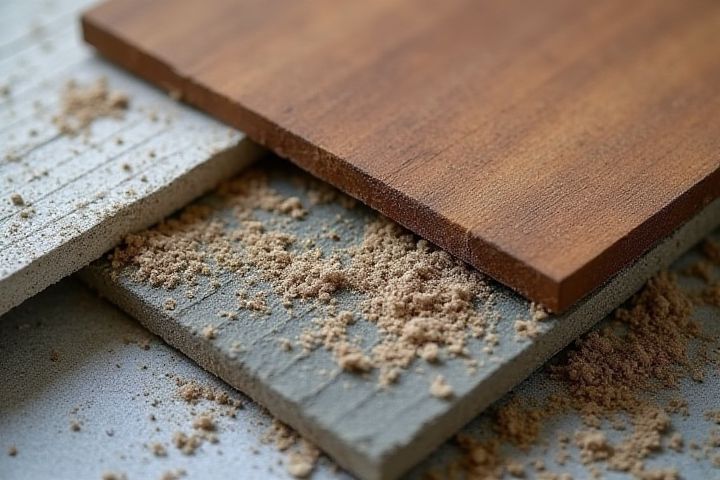
Durable houses commonly utilize materials such as reinforced concrete, which offers strength and longevity, and steel framing, known for its resistance to termites and fire. Brick and stone also provide excellent durability, allowing for weather resistance and lower maintenance needs over time. For roofing, metal sheets and tiles are favored for their ability to endure harsh conditions while offering a long lifespan. High-performance insulation forms a barrier against temperature fluctuations, enhancing energy efficiency and overall durability. Incorporating these materials into your home's construction can significantly enhance its resilience against environmental stresses.
What Materials Make A House Durable
Concrete
Concrete, a composite material made from cement, water, and aggregates, plays a crucial role in enhancing the durability of a house. Its exceptional compressive strength, typically ranging from 20 MPa to over 40 MPa, allows structures to withstand heavy loads and resist the effects of weathering. Furthermore, when properly cured, concrete exhibits resistance to fire, pest, and mold, contributing to a safer living environment. By incorporating additives such as fly ash or silica fume, you can further improve concrete's properties, increasing longevity and performance while ensuring your home remains sturdy for decades.
Steel
Steel is a vital material in constructing durable houses due to its exceptional strength and resilience. Sourced from iron ore and alloyed with carbon, steel can withstand extreme weather conditions, seismic activity, and fire, making it an ideal choice for structural components such as beams and columns. With a tensile strength of approximately 400-550 megapascals, steel ensures that your home can support heavy loads and resist deformation over time. Additionally, when properly galvanized, steel has enhanced resistance to corrosion, extending the lifespan of your property significantly, often exceeding 50 years.
Brick
Brick, a traditional building material, offers exceptional durability and resistance to weather conditions, fire, and pests. Composed primarily of clay, bricks undergo a high-temperature firing process, resulting in a compressive strength often exceeding 3,000 psi. The thermal mass of bricks allows for energy efficiency, effectively regulating indoor temperatures and reducing heating and cooling costs by up to 20% over time. When properly maintained, brick structures can last well over 100 years, providing a lasting investment for homeowners.
Stone
Stone is a highly durable material known for its longevity and strength, making it an excellent choice for constructing resilient homes. Natural stone, such as granite, limestone, and sandstone, can withstand harsh weather conditions and resist wear over time. It is also fire-resistant and provides excellent insulation, contributing to energy efficiency in your home. The use of stone in foundations, walls, and even roofing can significantly enhance your home's overall stability and value.
Hardwood
Hardwood is a key material known for its durability in home construction, particularly because of its natural density and resistance to wear. Species such as oak, maple, and cherry are favored for flooring and cabinetry due to their strength and ability to withstand impact over time. Hardwood also has excellent insulating properties, contributing to energy efficiency and temperature regulation within your home. Implementing high-quality hardwood in structural elements can enhance the overall lifespan of your house, often lasting more than 100 years with proper maintenance.
Fiber Cement Siding
Fiber cement siding is a highly durable building material, composed of a mixture of cement, sand, and cellulose fibers, which provides strength and resilience against harsh weather conditions. This siding option boasts a lifespan of over 50 years, significantly reducing maintenance costs compared to traditional siding materials. It is also fire-resistant, insect-resistant, and less prone to warping or cracking, making it suitable for various climates. By choosing fiber cement siding for your home, you can enhance its durability while enjoying a range of design options that replicate the appearance of wood or stone.
Vinyl
Vinyl siding is a popular choice for enhancing a house's durability due to its resistance to moisture, insects, and rot. This synthetic material can withstand extreme weather conditions, boasting a lifespan of over 30 years with minimal maintenance. Vinyl is made from polyvinyl chloride (PVC), which is not only lightweight but also resistant to fading and cracking, ensuring your home maintains its aesthetic appeal over time. With proper installation and care, vinyl can help reduce energy costs by improving insulation, making it a smart investment for your property.
Composite Materials
Composite materials significantly enhance the durability of your house by combining the best properties of various substances. For instance, fiberglass-reinforced polymer (FRP) boasts a remarkable tensile strength that can outlast traditional wood, while also resisting moisture and rot. Engineered wood products, such as laminated veneer lumber (LVL), provide superior strength and stability, reducing the risk of warping over time. By integrating materials like carbon fiber composites for structural applications, you can achieve increased resilience against extreme weather conditions, ensuring your home remains sturdy and long-lasting.
Thermally Modified Wood
Thermally modified wood is a sustainable choice for enhancing the durability of your home, achieved through a heat treatment process that reduces moisture absorption and increases resistance to decay. This method involves heating wood to temperatures between 180degC and 220degC, resulting in improved dimensional stability and a reduced likelihood of warping. The treatment also enhances natural resistance to insect damage, making it an ideal option for both structural elements and outdoor applications. With a lifespan that can extend significantly, thermally modified wood combines aesthetic appeal with long-term performance, offering a practical solution for building resilient, environmentally friendly homes.
Galvanized Metal
Galvanized metal, primarily composed of steel coated with zinc, offers excellent durability for various components in home construction. This corrosion-resistant material significantly extends the lifespan of roofing, gutters, and siding, often lasting up to 50 years with minimal maintenance. The zinc coating protects the underlying steel from rust and weather damage, making it ideal for areas exposed to moisture and harsh environments. By incorporating galvanized metal into your building projects, you enhance structural integrity while reducing long-term repair costs.
